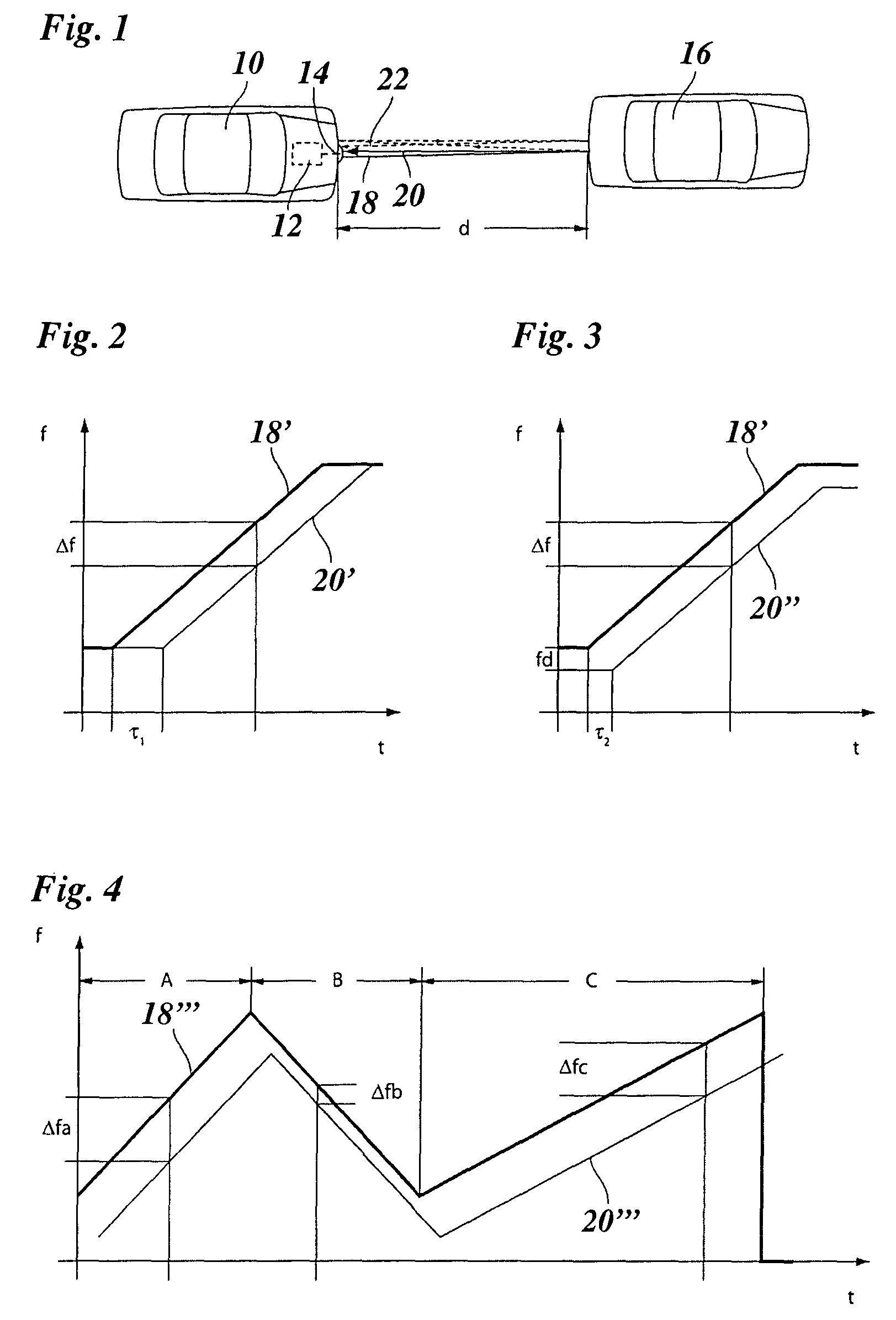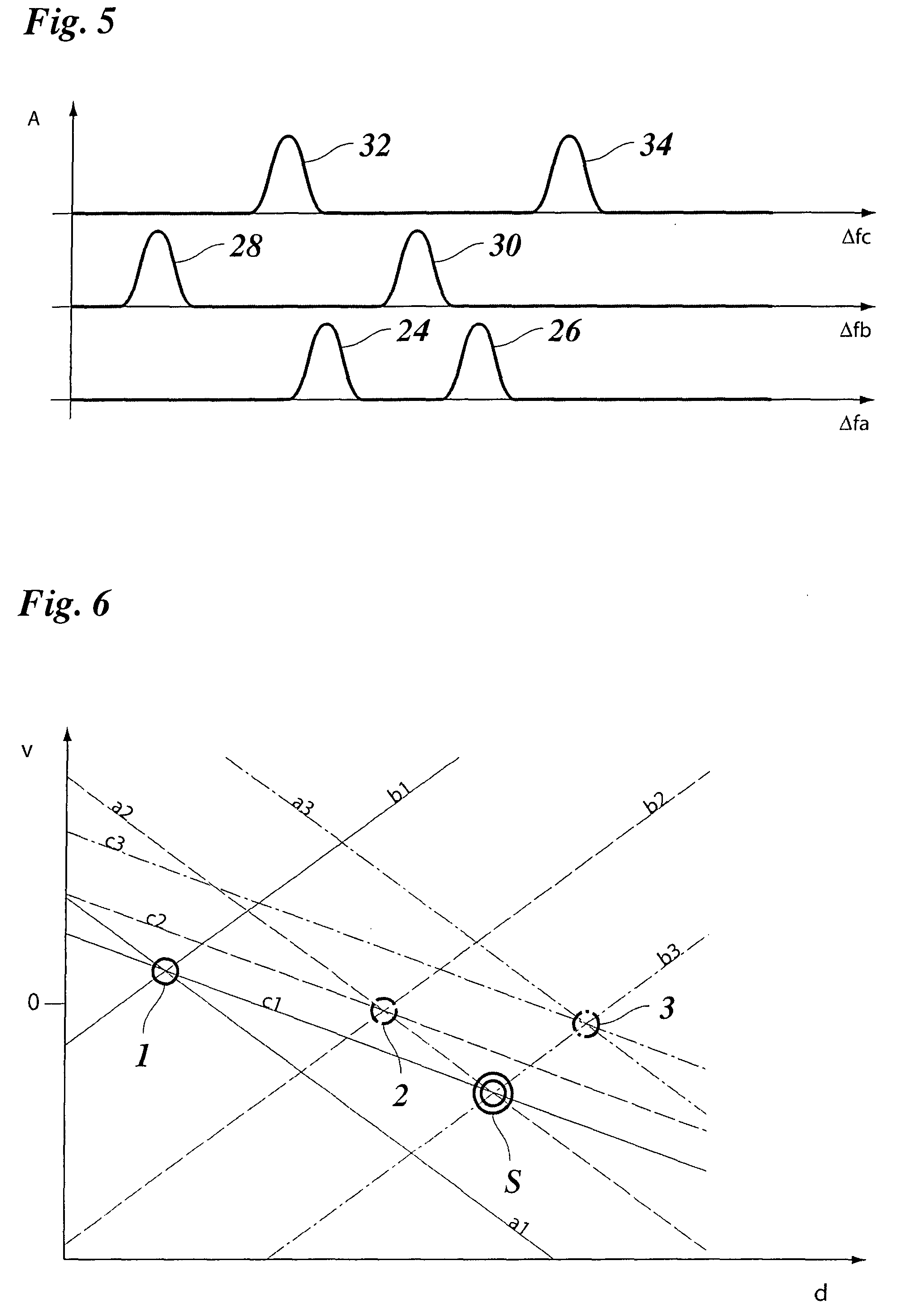Object verification method for use in radar systems for motor vehicles
a technology for radar systems and objects, applied in the direction of reradiation, measurement devices, instruments, etc., can solve the problem of extremely rare cases, and achieve the effect of reliable elimination of ghost objects
- Summary
- Abstract
- Description
- Claims
- Application Information
AI Technical Summary
Benefits of technology
Problems solved by technology
Method used
Image
Examples
Embodiment Construction
[0026]FIG. 1 schematically depicts a vehicle 10 which is equipped with a driver assistance system 12, e.g., a collision avoidance system, and an associated radar system. Of the radar system, merely a radar sensor 14 is shown, which is installed at the front of the vehicle in order to find the position of objects in the near field of vehicle 10. As an example of such an object, another vehicle 16 is shown.
[0027]Radar sensor 14 transmits a signal 18, which, for example, has a frequency on the order of 77 GHz, and which propagates in the forward direction in the form of a cone. Once it has covered a distance corresponding to distance d of the vehicles, signal 18 is reflected off of the back part of vehicle 16 and, in the process, undergoes a Doppler shift which is dependent on the relative velocity of the two vehicles. Reflected signal 20 propagates back towards radar sensor 14 where it is received. However, a portion of reflected signal 20 does not impinge again on radar sensor 14, bu...
PUM
 Login to View More
Login to View More Abstract
Description
Claims
Application Information
 Login to View More
Login to View More - R&D
- Intellectual Property
- Life Sciences
- Materials
- Tech Scout
- Unparalleled Data Quality
- Higher Quality Content
- 60% Fewer Hallucinations
Browse by: Latest US Patents, China's latest patents, Technical Efficacy Thesaurus, Application Domain, Technology Topic, Popular Technical Reports.
© 2025 PatSnap. All rights reserved.Legal|Privacy policy|Modern Slavery Act Transparency Statement|Sitemap|About US| Contact US: help@patsnap.com



